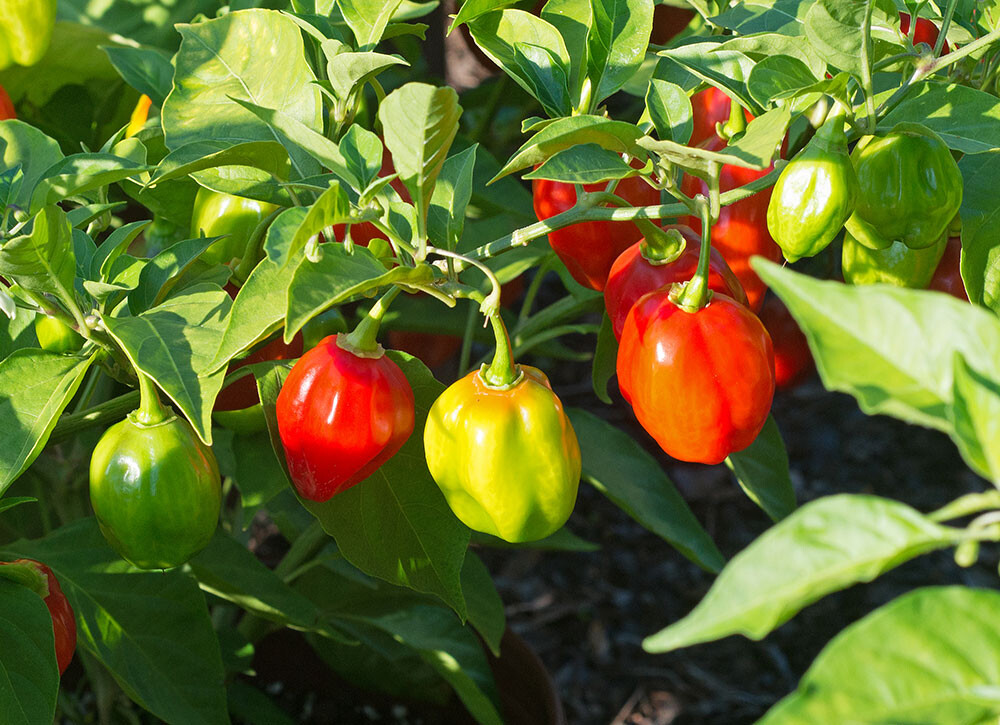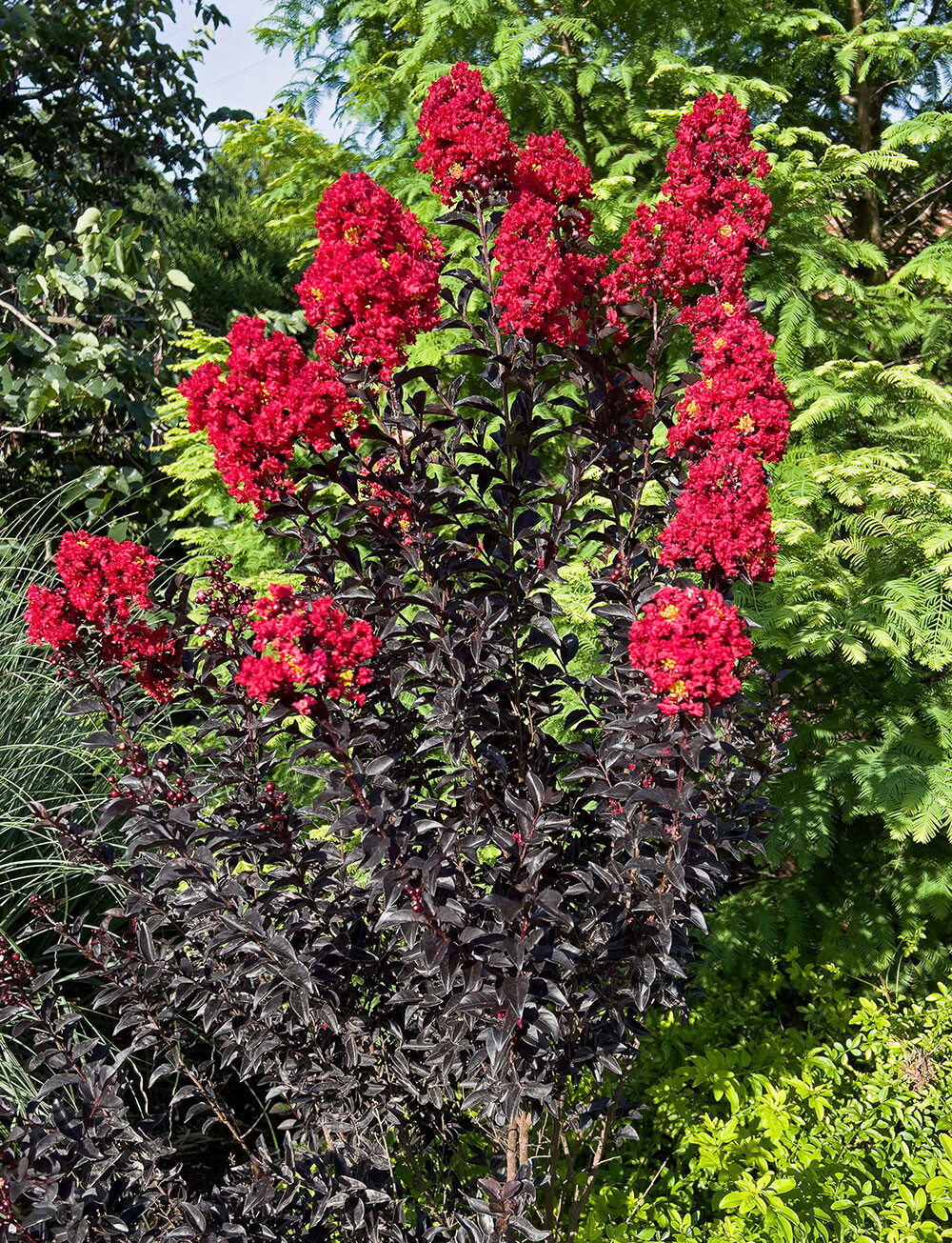Few woody ornamentals are as constant in the summer garden as crape myrtles. Once established, they can be reliably counted on to light up the landscape with extended shows of dazzling blooms, even during long stretches of sizzling heat and drought conditions.
My only problem with these pretties is they can be too constant. Let me explain: The foliage of typical crape myrtles is green, just green, ho-hum green, and, every year, their leaves constantly fade into the sameness of the other trees and bushes that surround them.
However, about 10 years ago, I was stopped in my tracks at a local nursery by an unexpected surprise: a crape myrtle smoldering itself in deep wine-red foliage to bring a dramatic — yet fun — version of shadow play out into the full sunlight of a garden setting. Its name was ‘Delta Jazz,’ and guess what went home with me that day?
‘Delta Jazz’ was one of the first cultivars to shine a light on dark-leaved crape myrtles and their ornamental possibilities by using its foliage as an alt-green backdrop to make the strong pink blooms really pop in the summer.
The success of ‘Delta Jazz’ led to the creation of a “Delta” series that features several crapes with leaves that have gone to the dark side adorned in flashy flowers ranging from spectral white (‘Delta Moonlight’) to light purple (‘Delta Eclipse’) to scorching red (‘Delta Flame’).
And “Delta” is not the only alpha series offering shadowy crapes to gardeners. Based on the same research that originated the first dusky-foliage crape myrtles, the “Magic” and “Black Diamond” series also have many cultivars that bring their unique combinations of darkness and brightness to landscapes.
Besides being pretty, crape myrtles from these three series are also similar in that they usually restrain themselves to heights of around 12 feet or less. In addition, many of their shadowy selections certainly aren’t strangers to local garden centers or online nurseries.
Like their lighter-leaved cousins, dusky crapes perform best in full sun, but this could make planting them in the scorch of a sizzling summer problematic. Sufficiently preparing their planting holes, heavily mulching, and watering them regularly will definitely help. As an alternative, buy now and plant later by simply tucking your new pretties and their pots away in a semi-shaded spot, watering them regularly, and then waiting for autumn — prime planting time for woody ornamentals.

Red is the right ripe color for habanero peppers.
If you are a moth who wants to get the most flame from garden-grown hot peppers, after the fruits begin to set, limit irrigation by watering only when their leaves just begin to wilt. This will lessen the amount of moisture in the peppers, which will enhance their culinary sizzle.
Also, picking too soon will not allow capsaicin (the chemical compound that creates the scorch) to build to maximum levels. Prime time for plucking hot peppers is when they are fully ripe, meaning after the fruits totally change from immature green to their advertised hot hues.
To Do in the Garden
June
- If you haven’t had the chance start your summer veggie garden yet, don’t think you’ve missed out on the fun — this month is still a good time to plant lima beans, cucumbers, eggplant, watermelons, peppers, sweet potatoes, pumpkins, squash, snap beans, and tomatoes.
- Houseplants vacationing outside enjoy the high summer humidity much more than we do because it helps keep their leaves hydrated. Wiping the leaves occasionally will also add beneficial moisture to the foliage, and perhaps more importantly, help prevent bad bug egg-laying activities.
July
- To help prevent the proliferation of diseases and insects that thrive on the spent remnants of roses, rake up and trash any fallen flowers and foliage every week or two. Do not compost.
- Brown patches of grass in the yard aren’t necessarily the result of summer drought. Push a shovel into the top few inches of an afflicted area and turn the soil over. If there are any short, white “worms” present, it means that lawn grubs have been gorging themselves on grass roots. For the best way to eradicate these little nasties, check with your local friendly garden center.
- Meet the 2023 Movers & Shakers
- Garden Adventurer: Crape Myrtles in the Dark
- Liquid Assets: La Surfeza
- Liquid Assets: Roman Holiday
- Restaurant Profile: So Hot
- Nonprofit Spotlight: Wake Harvest
- Erica Chats: Embrace Summer
- Small Business Spotlight: Graffiti
- On Trend: Resin Art
- Adventure Awaits
- Things to Do: June / July 2023







